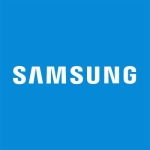We primarily use the solution for iPhone management.
The ability to push out applications is a great aspect of the solution.
We can create a tag of a phone and we can create a package of applications, and then we can tag the device and say, "This device must have these applications." The solution ensures that the device gets those applications.
We also like that it allows us to get applications without setting up iCloud accounts. For some of our employees, the extra steps to have "yet another account" are simply not needed, when all they want the is the app store (and not all of the other iCloud functionality).
For example, a delivery driver - we want him to have Google Maps, Outlook, Chrome, and a Time Clock app. We can push these apps out through Meraki MDM without having to set him up with an iCloud account.
We've used the iOS client. The Windows client has a lot to be desired to be a full management tool.
We first tried the Windows client, but quickly determined that it wasn't going to cut it for most Windows cases. The Windows portion of this product needs improvement.
We've been using this solution for a few years.
The stability of the solution is very good. It's reliable.
I'm not sure how the solution scales. In our experience, we've only put it on twenty devices.
We've never contacted technical support for Systems Manager
Deployment took a few hours, initially. However, the total time to fully understand it and get into the weeds with the way it works will take a lot longer since there's so much to it. It took us a few months of testing it out here and there to get comfortable to roll it out. Bear in mind, we didn't have a deadline, and this was being done as a side project.
Error can't divide by $0.00
We're using a free version of the solution. But if we exceed the limit the pricing was in line with other MDM solutions.
No, we had a free license to one hundred seats of Systems Manager from our Meraki firewalls. We have since looked at Jamf and Microsoft Intune.
There's a lot of options in the configuration and the setup. Make a test device and a test group and make sure you fully understand what is going on before you roll it out. For example, one setting lets you deny use of Safari, which sounds good till the user clicks a link in an email and it won't open. *Unless you use Microsoft Outlook which allows you to pick the app that links open in.
Setting up VPP and DEP takes a little bit of effort, but these will be required no matter the MDM solution you choose. The Apple device enrollment program allows devices bought from the carrier you are registered with to show up in the account.
On the Apple side, the VPP allows you to bulk buy apps, that's the same, regardless of which MDM solution you use.
Personally, we don't plan to continue to use it going forward. While the Apple side of the solution is great, the Windows side just has a lot of problems.















